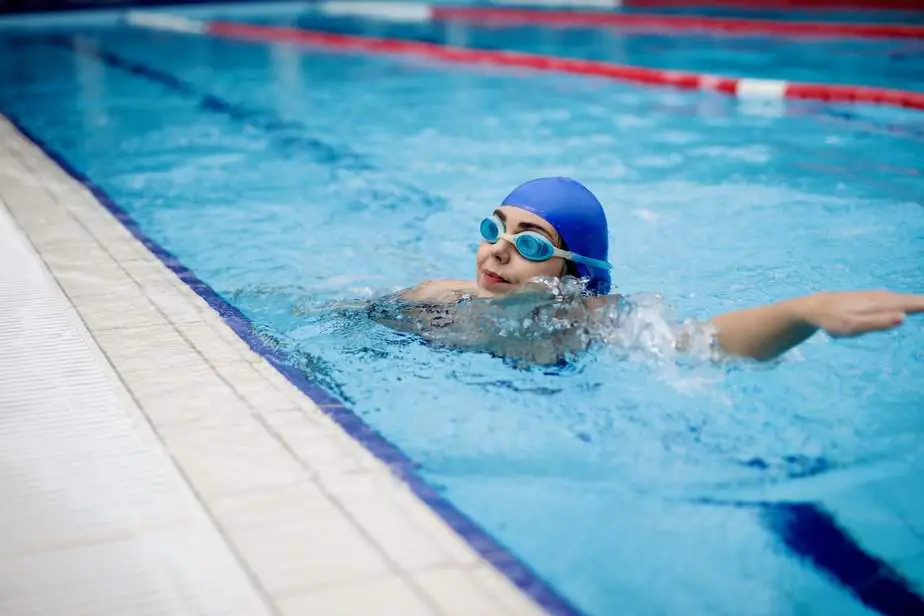When I was a lot younger, I remember always being frustrated with my swimming goggles fogging up. I just wanted to swim without any interruptions, but every few minutes I had to take off my goggles and give them a rinse because they’d be completely fogged over.
I didn’t know what caused it. I remember there were days when I’d naively think: “Maybe today my goggles won’t fog over.” It was just wishful thinking. Within a few minutes, it’d fog over no matter how much I was hoping that it wouldn’t.
I remember I’d buy new goggles hoping that it would magically keep the fog away. It didn’t. I remember friends would tell me the solution was to avoid touching the lens with my fingers. It didn’t last long. Friends told me to coat the lens with my spit, and I thought they were messing with me, but I had nothing to lose at this point so I did it. It actually kinda worked, but again, not for very long.
Fogged up swimming goggles were the bane of my existence when I was younger. Now that I am a lot older and wiser, I can finally say: not anymore. When the internet became popular, I scoured swimming forums and online articles for the best ways to stop swimming goggles from fogging up. I’ve also since learned why swimming goggles fog up in the first place, and knowing this can help prevent it from happening.
Based on personal experience, talking with others, and some online research, the best ways to stop swimming goggles fogging up are to get a pair of goggles that fit you well, keep it clean, treat it with an anti-fog spray, use baby shampoo, cool your face with cold water, coat the lens with saliva, and not to ever touch the lens with your fingers. Don’t follow all of these tips at the same time; do them only when appropriate.
After discovering these tips, I was glad to learn that some of the advice I received when I was young was, in fact, good advice. But I still wasn’t sure why. Read on, and I will also discuss why swimming goggles fog up in the first place and how these tips can prevent it from happening.
Why do goggles and dive masks fog up?

First off, this is not an issue that is exclusive to swimming goggles. If you were to swim with a dive mask, for instance, it would also fog up eventually. You’ve also probably noticed that your bathroom mirror will fog up when you take a hot shower, your glasses fog up when you exhale with a mask on, or that your car windows will fog up when it’s cold outside and you’re cranking the heat up. These are all symptoms of the same problem, and that problem is condensation.
Condensation can occur when your cold swimming goggles come into contact with significantly warmer air, resulting in the surrounding moisture forming water droplets that fog up your lenses.
When you get in the pool, the pool water is cold and your body temperature is a lot warmer. With goggles on, the temperature outside of the goggles is cold, but the temperature inside is very warm since your body is constantly generating heat and there is no air circulation inside the goggles.
Can you see how, as the temperature rises, eventually one’s goggles will fog up? That’s why you can get a few minutes of no fog until the temperature inside rises to a certain point and condensation starts to form. We can use this knowledge to our advantage to limit how quickly it fogs up.
How to keep swimming goggles from fogging up
Keep your goggles clean
When you first buy a new pair of swim goggles, it should come with an anti-fog coating applied by the manufacturer. This coating will not last forever, but you can make it last for a lot longer than most people by doing the following.
First, always rinse your goggles after every use by running it under warm water. This helps wash off the chlorine and other chemicals lingering on the goggles that might damage the coating.
Second, always dry your goggles with a towel or microfiber cloth. Leaving water droplets on it can cause water streaks to form which also obscures your vision. Actually, the main concern is mold growth; if you notice a white powdery substance or black dots on your goggles, that’s mold, and you need to thoroughly wash them off.
Never touch the lens with your fingers
If you want your swimming goggles lens to remain pristine and clean, don’t directly touch it with your fingers. Our body is constantly producing oils to moisturize and protect our skin, and there will also be fingers on your fingertips. Touching the lens with your fingers will transfer some of this oil to the lens. You might also have oily fingers if you applied lotion, such as sunscreen, to it.
With the lens now oily, it’s much easier for debris to stick on it. An oily lens will also make some of the other solutions less effective, and will ultimately lead to an unclean pair of lenses that is harder to see through.
You might be wondering how you can effectively clean your goggle lenses if you can’t touch them with your fingers. You just need to use a microfiber cloth or soft-bristle toothbrush instead of directly using your fingertips.
Use anti-fog spray
- QUICK SPIT ANTIFOG SPRAY: Now the worlds most recognized antifog comes in a spray! Quick spit spray works on almost anything that fogs, including dive...
- LONG-LASTING: Over 200+ pumps per bottle! Works on glass and plastic
- HIGH PERFORMANCE ANTIFOG: Apply wet or dry - Quick spit is a high performance antifog in a convenient spray formula. NOT recommended for use on...
At some point the anti-fog coating the manufacturer applied will wear off. When that time comes, you can rely on anti-fog spray to keep your goggles fog-free.
There are many products to choose from, and honestly, they are all cheap and should be similarly effective. Just get whatever anti-fog spray your local dive shop sells, or whatever is most convenient for you.
To apply it, simply follow the instructions on the label. Typically you spray it on the inside of the lens when it’s still dry. Coat it evenly. Remember not to touch it with your fingers, as you may be tempted to rub it in, but resist that urge.
Anti-fog sprays are convenient because of how small they are. You can easily keep a few of them with you in a small bag.
Use saliva
Believe it or not, saliva is actually an effective anti-fog solution. You might resort to this option if you’re in the middle of swimming and can’t be bothered to get out, dry your goggles and re-apply the anti-fog spray.
You may not always have an anti-fog spray on hand, but everybody can produce saliva. It’s quick, dirty, but it works. Evenly coat the inside of the lens with your saliva. Once again, resist the urge to use your finger to rub it in, as this transfers unwanted oils onto the lens. After coating it, rinse the spit off with water and your goggles should stay fog-free for a bit longer.
Cool your face
The reason why goggles fog up is due to heat. You can therefore slow down on how it takes for fog to form by splashing cold water on your face. This tip can be quickly and easily done in conjunction with the other tips in this article.
Baby shampoo
Baby shampoo is a surprisingly versatile product, and it can help us keep our goggles from fogging up. All you need to do is apply a small amount onto goggles and let it sit for 10-15 minutes before wearing them into the water. The baby shampoo will form a coating that acts as a protective layer against moisture build-up on the lens.
Parting words
In this article, I went over some best practices that you should follow to stop swimming goggles from fogging up. You do not necessarily need to make use of every single tip, but knowing more solutions is better when you’re in a pinch.
Furthermore, these solutions are only temporary. You cannot permanently keep your goggles from fogging up. Anti-fog spray must be re-applied. Dirt and debris must be washed off. It’s a constant cycle, and one that requires constant maintenance. However, it is worth the effort, because the bliss of swimming without your goggles fogging up is hard to beat.
There are even more solutions you can try. I have heard people mention treating the lenses with shampoo, shaving cream, and even a raw potato. So clearly there is more than one way to skin a cat, but at least I can vouch that the tips provided in this article have worked for me. Give it a try and see if i works for you.
Last update on 2025-09-13 / Affiliate links / Images from Amazon Product Advertising API


